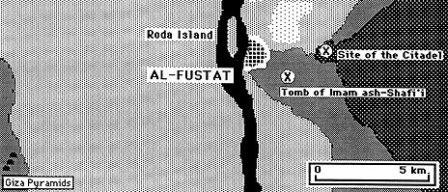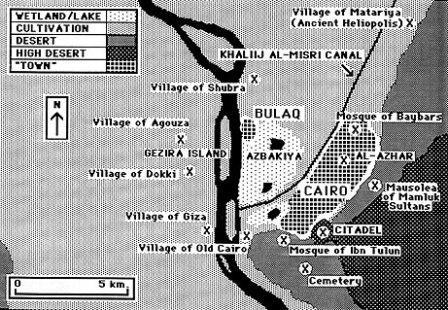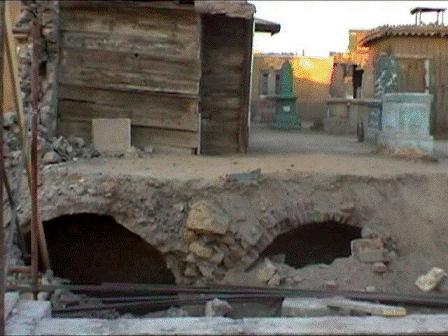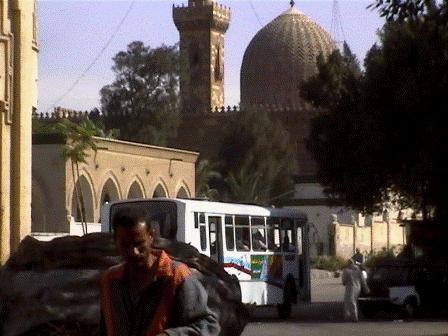 HISTORY
HISTORY

OF
THE CITY OF THE DEAD
The
rising of the City of the Dead is dated after the year 642 A.D. (the
Arab conquest of Egypt) at
the foot of Moqattam hills, eastern border of al Fustat, the ancient
Cairo. It has been for long Arab conquerors' first burial place. Every
following Arab dynasty founded a new cemetery with religious and civil
buildings, such as Sufi collegess (Islamic mysticism),
hospices for the poor, hammam, caravanserrai,
hostels for pilgrims.The
Fatimids
(979-1171 A.D.) built their tombs inside the capital
al Qahira, and a cemetery outside the northern gate Bab el Nasr.  In addition, because of their Shi'ite religious faith, they built
funerary mausoleums for Alid martyrs, Alì ibn Abu Taleb's (Mohammed's
cousin and son in law) family members.
During the XIIIth century Saladin wanted
to unify the four Egyptian capital cities, (al Fustat of the
Omayyad dynasty, the Abbassids' al Askar, the Tulunids' al
Qata’i, the Fatimids' al Qahira), integrating the various
cemeteries in the urban area. The most important funerary mausoleum was
Imam Shafi'i's tomb, the founder of Shafai’it rite of Sunni
Islam, considered one of the holiest person. Since long time his tomb
has been visiting by Muslims and it represents the centre of southern
cemetery. The
necropolis saw its
last
historical
expansion
under
the Mameluk
domination (1260-1517 A.D.) The
Mameluk
In addition, because of their Shi'ite religious faith, they built
funerary mausoleums for Alid martyrs, Alì ibn Abu Taleb's (Mohammed's
cousin and son in law) family members.
During the XIIIth century Saladin wanted
to unify the four Egyptian capital cities, (al Fustat of the
Omayyad dynasty, the Abbassids' al Askar, the Tulunids' al
Qata’i, the Fatimids' al Qahira), integrating the various
cemeteries in the urban area. The most important funerary mausoleum was
Imam Shafi'i's tomb, the founder of Shafai’it rite of Sunni
Islam, considered one of the holiest person. Since long time his tomb
has been visiting by Muslims and it represents the centre of southern
cemetery. The
necropolis saw its
last
historical
expansion
under
the Mameluk
domination (1260-1517 A.D.) The
Mameluk
 sultans and nobles
supported
many monuments, such as their
funerary mausoleums
and mosques, being the
area considered holy for
the presence of the Sufi
tombs.
In addition they
planned
a secular urbanization.
The City of the Dead
was a funerary place as well as a political space. As in Europe the
monuments and holy celebrations were expression of noble and royal power, so
the Mameluks
on parades and processions went down from Citadel crossing the necropolis
and coming back from Bab el Nasr.
sultans and nobles
supported
many monuments, such as their
funerary mausoleums
and mosques, being the
area considered holy for
the presence of the Sufi
tombs.
In addition they
planned
a secular urbanization.
The City of the Dead
was a funerary place as well as a political space. As in Europe the
monuments and holy celebrations were expression of noble and royal power, so
the Mameluks
on parades and processions went down from Citadel crossing the necropolis
and coming back from Bab el Nasr.
|
The following dynasty of Ottomans ( 1517-1798 A.D.) built magnificent family tombs and restored many altars in Turkish style, but only few of the 110 sovereigns (pasha) had own tomb in the huge necropolis. Infact many other small cemeteries intra muros were built because Cairo population began to bury their dead in the home courtyards. This custom came to an end in 1798 with the Napoleonic conquest. The necropolis was used only as burial place and its mosques lost their education role. In the XXth century the urban crisis and, above of all, the poverty caused by the two World Wars made many peasants from countryside to move to Cairo in search of better conditions of life. They occupied the tombs and enlarged them, in order to build their houses. The necropolis changed completely its aspect till to the contemporary City of the Dead. |